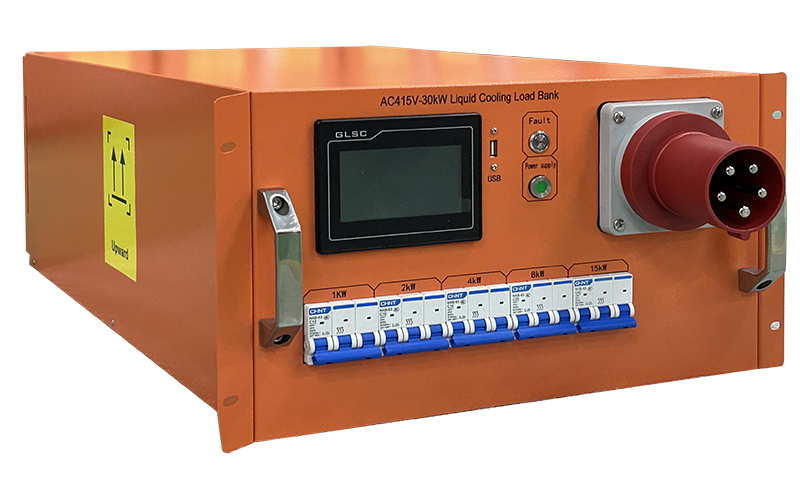The liquid-cooled load bank enables precise temperature control and stable output, facilitating the verification of equipment performance limits
Time:2025-10-09
In the research and development and quality certification of high-power equipment, performance limit verification is a crucial step - it is necessary to simulate the operating conditions of the equipment under full load and extreme environments to test its critical capabilities in withstanding high temperatures and overloads. However, traditional air-cooled load banks often encounter problems such as "large temperature control deviation and frequent output fluctuations" due to unstable heat dissipation: when the power density of the equipment exceeds 50W/cm², the temperature is prone to exceed the ±5℃ control range, resulting in distorted test data. What's more, the load output current fluctuates greatly, which may trigger the equipment protection mechanism, forcing the limit verification to be interrupted and making it difficult to accurately capture the true performance boundary of the equipment.
The liquid-cooled load bank, with its dual advantages of "precise temperature control + stable output", has become the core support for the extreme verification of equipment. In terms of temperature control, it adopts a "dual circulation heat conduction + intelligent temperature control" system: The inner circulation directly adheres to the load module with an environmentally friendly heat conduction medium of high specific heat capacity, quickly absorbing heat. The outer circulation is linked with the cooling water source through a plate heat exchanger to adjust the heat dissipation efficiency in real time. Combined with a high-precision temperature sensor (error ≤0.1℃) and PID intelligent algorithm, the temperature of the load module can be stably controlled within ±1℃. Even at an ultra-high power density of 80W/cm², it can still avoid sudden temperature rises and falls, providing a stable temperature environment for extreme tests.
In terms of output stability, the liquid-cooled load bank is equipped with a high-precision power module and an anti-interference circuit design: the current output accuracy reaches 0.1%FS, the voltage fluctuation range is ≤0.2%, and it can maintain a constant load for a long time, simulating the continuous operation state of the equipment under extreme working conditions. When a certain new energy battery enterprise used it to conduct extreme charge and discharge tests on battery cells, it successfully captured the critical point of capacity attenuation of the battery cells after 200 cycles by stably outputting a 10C high-rate current, providing key data for battery safety design. In the test of industrial frequency converters, the liquid-cooled load bank continuously output 120% of the rated power and operated continuously for 72 hours without interruption, precisely verifying the overload tolerance capacity of the frequency converter.
In addition, the liquid-cooled load bank also supports custom extreme test modes, allowing for the setting of complex scenarios such as stepped power loading and pulse load impact, to meet the verification requirements of different devices. From chips to large industrial equipment, liquid-cooled load banks, with "stability" at their core, help R&D teams precisely break through the performance limits of equipment, safeguard product reliability, and promote the development of high-power equipment towards higher performance and greater safety.
News Recommendation
-
 2024-09-11
2024-09-11TRIUMPH LOAD EXHIBITING AT Enlit Europe 2024 -BOOTH 7.H08
-
 2023-04-21
2023-04-21TRIUMPH LOAD EXHIBITING AT DATA CENTER WORLD GERMANY 2023-BOOTH F909
-
 2023-04-06
2023-04-06TRIUMPH LOAD EXHIBITING AT ELECTRIC POWER TECH KOREA 2023 – Booth G109
-
 2022-05-05
2022-05-05What is the role of ac load bank for power supply?
-
 2022-05-05
2022-05-05What is the role of the load bank?


